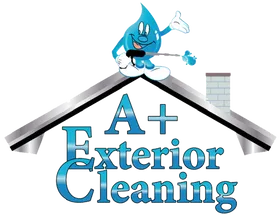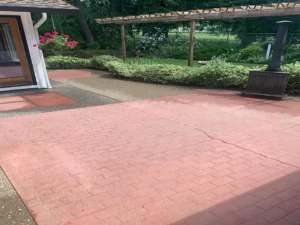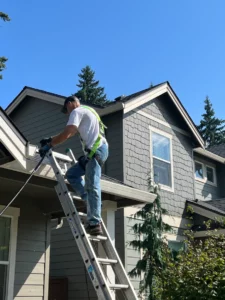The Science Behind Roof Moss: Why It Grows and How to Prevent It
That green, fuzzy layer creeping across your roof isn’t just an eyesore—it’s a biological invader that can cause serious damage to your home. Moss growth on roofs is more common than many homeowners realize, particularly in regions with high humidity and frequent rainfall. Understanding the science behind why moss thrives on rooftops is the first step toward protecting your investment.
At A+ Exterior Cleaning, we’ve seen firsthand how unchecked roof moss growth can transform from a minor aesthetic issue into costly structural problems. This guide will help you understand the biology of roof moss, identify the conditions that encourage its growth, and learn effective prevention strategies to keep your roof moss-free.
Understanding the Biology of Roof Moss
Moss belongs to a group of plants called bryophytes, which are among the oldest plant species on Earth. Unlike flowering plants, moss doesn’t have roots in the traditional sense. Instead, it uses tiny structures called rhizoids to anchor itself to surfaces and absorb moisture directly from the environment.
The moss life cycle begins when spores land on your roof. These microscopic particles can travel for miles on wind currents, making it nearly impossible to prevent their arrival. Once a spore finds suitable conditions, it germinates and develops into a small plant called a gametophyte. This stage is what we typically recognize as moss.
What makes moss particularly problematic for roofs is its ability to retain moisture. A single moss plant can absorb up to 20 times its weight in water, creating a perpetually damp environment on your roof surface. This constant moisture becomes a breeding ground for further moss growth and can accelerate the deterioration of roofing materials.
Moss reproduction occurs through both spores and fragmentation. When pieces of moss break off, they can establish new colonies elsewhere on your roof. This means that even small patches of moss can quickly spread across large areas if left untreated.
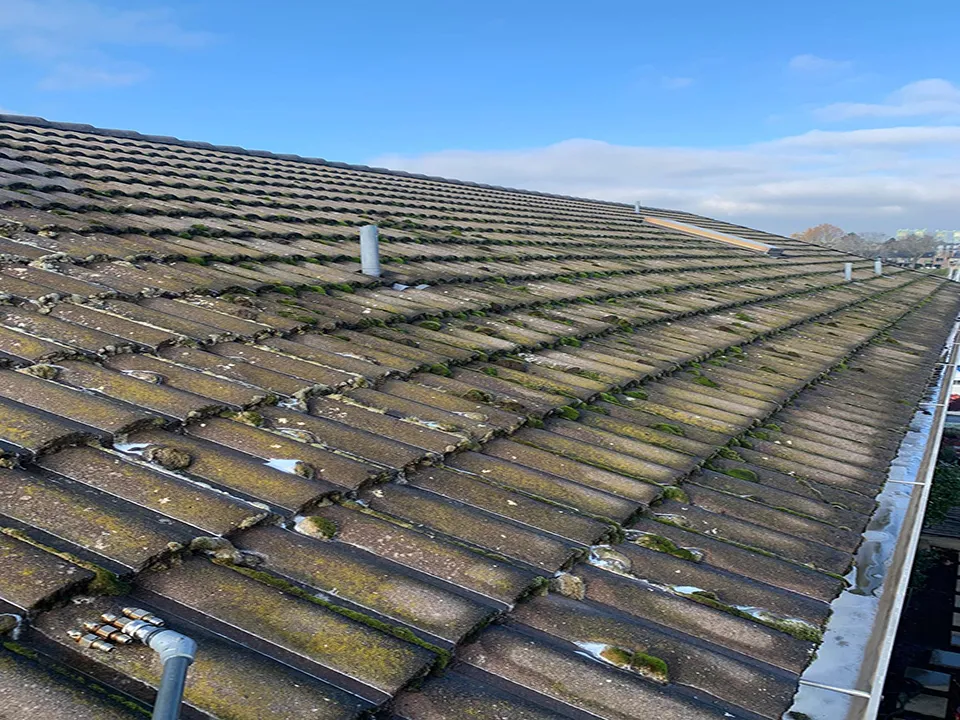
Factors Contributing to Roof Moss Growth
Several environmental conditions create the perfect storm for moss colonization on roofs. Understanding these factors helps homeowners identify vulnerable areas and take preventive action.
Moisture and Humidity
Moss thrives in consistently moist environments. Roofs that remain wet for extended periods due to poor drainage, frequent rainfall, or high humidity levels are prime candidates for moss growth. Areas where water pools or drains slowly become particularly susceptible.
Shade and Limited Sunlight
Direct sunlight naturally inhibits moss growth by drying out surfaces and creating conditions too harsh for moss survival. Roofs shaded by large trees, neighboring buildings, or architectural features like dormers create cool, damp microclimates where moss flourishes.
Temperature Stability
Moss prefers moderate temperatures without extreme fluctuations. North-facing roof slopes, which receive less direct sunlight throughout the day, maintain more stable temperatures and higher moisture levels, making them ideal for moss colonization.
Tree Cover and Debris
Overhanging branches not only provide shade but also drop organic debris onto your roof. Fallen leaves, twigs, and other organic matter decompose and create nutrient-rich conditions that support moss growth. Trees also increase humidity levels around your home through transpiration.
Roof Material and Texture
Certain roofing materials are more susceptible to moss growth than others. Asphalt shingles, particularly those with rough textures, provide excellent surfaces for moss attachment. Wood shakes and concrete tiles also offer favorable conditions due to their porous nature.
The Impact of Moss on Roofs
The presence of moss on your roof creates both immediate and long-term problems that can significantly impact your home’s structural integrity and value.
Physical Damage to Roofing Materials
Moss acts like a sponge, continuously absorbing and retaining moisture against your roof surface. This constant dampness can cause shingles to deteriorate prematurely, leading to cracking, curling, and granule loss. On wood shakes, moss retention accelerates rot and decay.
As moss grows, it can lift the edges of shingles and tiles, creating gaps where water can penetrate. These lifted materials are also more susceptible to wind damage during storms, potentially leading to missing or damaged sections.
Water Infiltration and Leaks
The most serious consequence of moss growth is its impact on your roof’s waterproofing capabilities. Moss creates pathways for water to flow under shingles and into your home’s structure. Even minor leaks can lead to significant problems, including ceiling stains, insulation damage, and mold growth.
Structural Issues
Long-term moisture exposure caused by moss can weaken roof decking and structural components. Rotting wooden elements may require extensive repairs or replacement, resulting in costs that far exceed regular maintenance expenses.
Energy Efficiency Concerns
Moss-covered roofs retain more moisture, which can affect your home’s insulation properties. This moisture retention can lead to increased heating and cooling costs as your HVAC system works harder to maintain comfortable temperatures.
Preventive Measures
Prevention remains the most cost-effective approach to managing roof moss. By addressing the conditions that promote moss growth, homeowners can significantly reduce their risk of infestation.
Tree Management
Trimming overhanging branches improves air circulation and increases sunlight exposure on your roof. Aim to maintain at least 10 feet of clearance between tree branches and your roof surface. Regular pruning also reduces the amount of organic debris that falls onto your roof.
Roof Ventilation
Proper ventilation helps maintain dry conditions that discourage moss growth. Ensure your attic has adequate intake and exhaust vents to promote air circulation. Ridge vents, soffit vents, and exhaust fans all contribute to maintaining optimal conditions.
Gutter Maintenance
Clean gutters ensure proper water drainage and prevent standing water near your roofline. Clogged gutters can cause water to back up onto your roof, creating ideal conditions for moss development. Clean your gutters at least twice yearly and inspect them regularly for damage.
Debris Removal
Regularly remove leaves, twigs, and other organic matter from your roof surface. This debris not only provides nutrients for moss but also traps moisture against your roof. Use a soft-bristled broom or leaf blower to clear debris without damaging roofing materials.
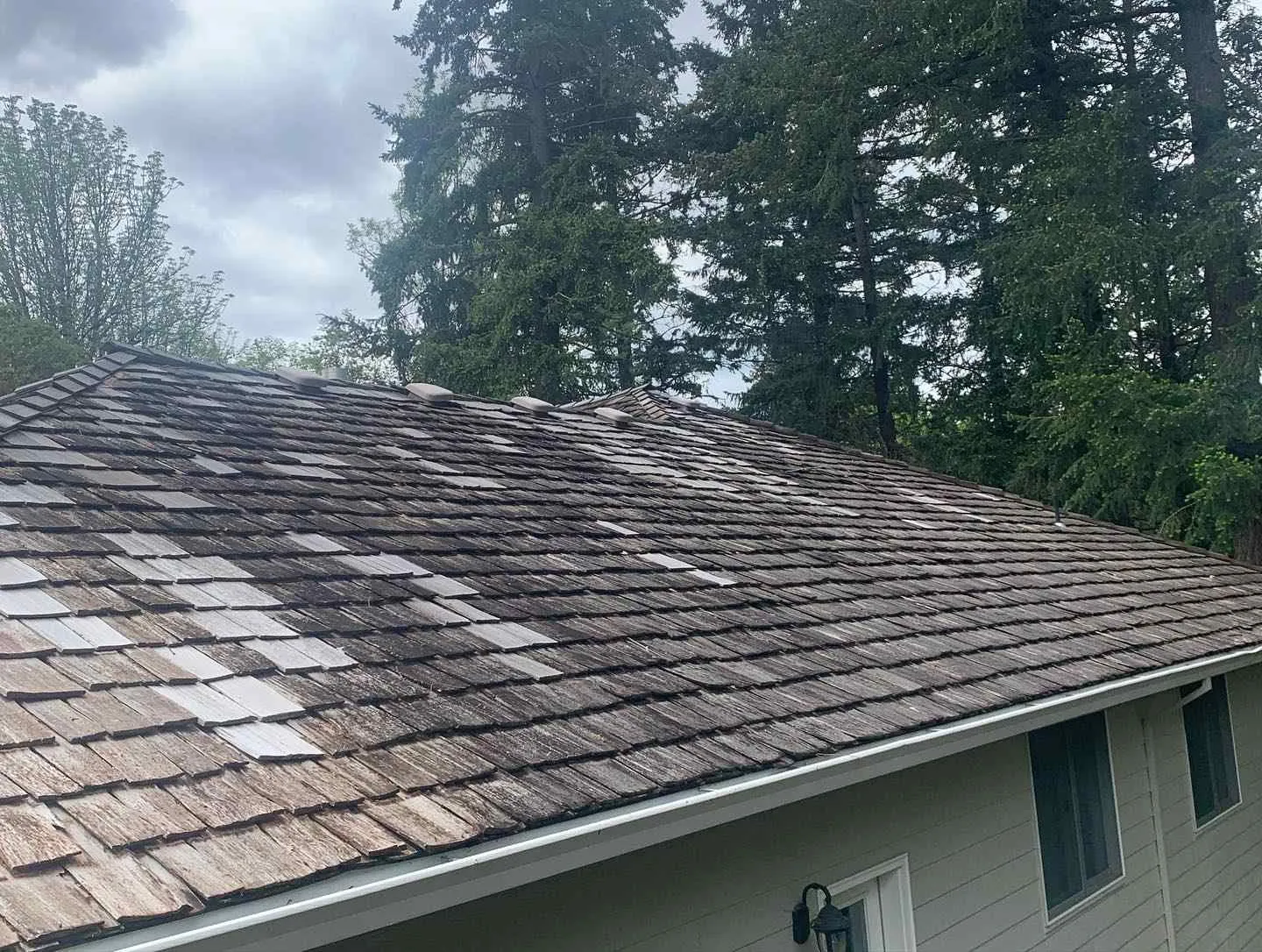
DIY Moss Removal Techniques
For homeowners who prefer to tackle moss removal themselves, several safe and effective methods can help eliminate existing growth.
Safety First
Before attempting any roof work, prioritize safety. Use proper ladder techniques, wear non-slip shoes, and never work on wet or icy surfaces. Consider using a safety harness for steep roofs, and always have someone nearby when working at height.
Gentle Scraping Method
Use a plastic scraper or putty knife to gently remove moss from shingle surfaces. Work carefully to avoid damaging the protective granules on asphalt shingles. Remove moss when it’s dry, as wet moss can be more difficult to scrape and may cause more damage to roofing materials.
Low-Pressure Washing
If you choose to use a pressure washer, use the lowest effective pressure setting and spray downward to avoid forcing water under shingles. High-pressure washing can damage roofing materials and force water into areas where it can cause leaks.
Natural Solutions
Some homeowners prefer natural moss removal methods. A solution of dish soap and water can help loosen moss for easier removal. However, avoid using bleach or other harsh chemicals that might damage plants below or harm the environment.
When to Call a Professional
While DIY roof moss removal can be effective for minor infestations, certain situations require professional intervention. Recognizing when to call experts can save you time, money, and potential injury.
Extensive Coverage
When moss covers more than 25% of your roof surface, professional removal becomes more practical and safe. Professionals have the proper equipment and experience to handle large-scale moss problems efficiently.
Safety Concerns
Steep roofs, multi-story homes, or roofs with complex angles and obstacles present significant safety risks. Professional roof cleaners have specialized equipment and training to work safely in challenging conditions.
Recurring Problems
If moss continues to return despite your prevention efforts, professional assessment can identify underlying issues contributing to the problem. Experts can recommend targeted solutions and long-term prevention strategies.
A+ Exterior Cleaning Expertise
At A+ Exterior Cleaning, our team combines years of experience with specialized equipment to provide comprehensive moss removal and prevention services. We understand the unique challenges different roofing materials present and tailor our approach accordingly. Our professionals can safely remove moss without damaging your roof while implementing prevention strategies that provide long-term protection.
Our services include thorough roof inspection, gentle moss removal, debris clearing, and the application of moss prevention treatments that discourage future growth. We also provide recommendations for improving drainage, ventilation, and landscaping to minimize conditions that promote moss development.
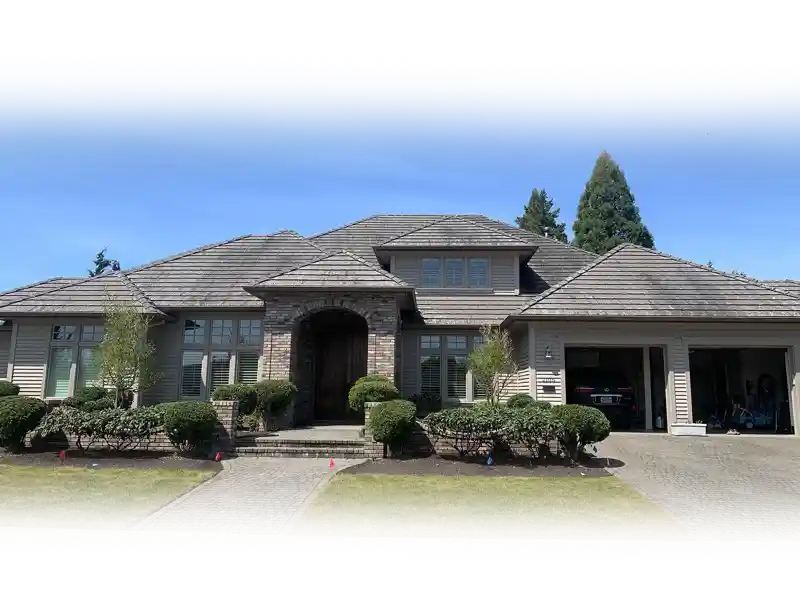
Protect Your Investment with Proper Moss Management
Roof moss is more than a cosmetic issue—it’s a biological threat that can compromise your home’s protection and value. Understanding the science behind moss growth empowers you to take proactive steps to prevent colonization and recognize when professional intervention is necessary.
Regular maintenance, environmental modifications, and timely professional cleaning can keep your roof moss-free for years to come. Don’t let this small plant create big problems for your home. Contact A+ Exterior Cleaning today for a comprehensive roof assessment and customized moss prevention plan that protects your most important investment.
https://www.google.com/maps?cid=9581861370272832557
